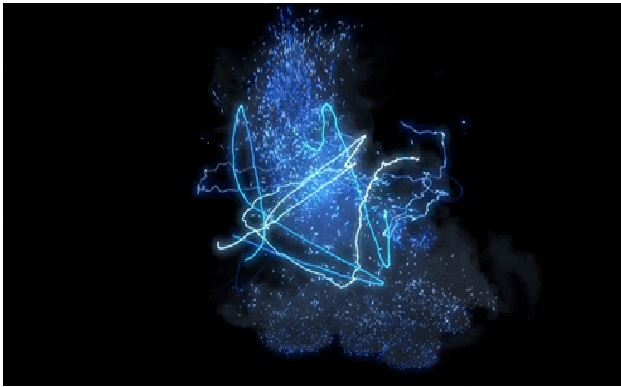Tiny Particles Work Collectively to Generate Complex Behaviour
Simple microparticles can beat rhythmically together, generating an oscillating electrical current that could be used to power micro-robotic devices. MIT engineers are taking advantage of a phenomenon known as emergent behavior on the microscale. They have designed simple microparticles that can beat rhythmically together, generating an oscillating electrical current that could be used to power micro-robotic devices.Working together, the microparticles can generate a beating clock that oscillates at a very low frequency. The researchers demonstrated how these oscillations can be harnessed to power tiny robotic devices. [1]

Figure 1. Tiny Particles Work Collectively to Generate Complex Behaviour
Figure 1 shows the particles used to create the new oscillator perform a simple chemical reaction that allows the particles to interact with each other through the formation and bursting of tiny gas bubbles. Under the right conditions, these interactions create an oscillator that behaves similar to a ticking clock, beating at intervals of a few seconds. [2]
Collective behaviour
Demonstrations of emergent behavior can be seen throughout the natural world, where colonies of insects such as ants and bees accomplish feats that a single member of the group would never be able to achieve.
“Ants have minuscule brains and they do very simple cognitive tasks, but collectively they can do amazing things. They can forage for food and build these elaborate tunnel structures,” Strano says. “Physicists and engineers like myself want to understand these rules because it means we can make tiny things that collectively do complex tasks.”
In this study, the researchers wanted to design particles that could generate rhythmic movements, or oscillations, with a very low frequency. Until now, building low-frequency micro-oscillators has required sophisticated electronics that are expensive and difficult to design, or specialized materials with complex chemistries. [3]
Oscillating current
The researchers also showed that they could use the rhythmic beating of these particles to generate an oscillating electric current. To do that, they swapped out the platinum catalyst for a fuel cell made of platinum and ruthenium or gold. The mechanical oscillation of the particles rhythmically alters the resistance from one end of the fuel cell to the other, which converts the voltage generated by the fuel cell to an oscillating current. [4]
References:
- https://headtopics.com/us/tiny-particles-work-collectively-to-generate-complex-behavior-30675350
- https://news.mit.edu/2022/microparticles-oscillating-current-1013
- https://scitechdaily.com/tiny-particles-work-collectively-to-generate-complex-behavior/
- https://sciencesprings.wordpress.com/tag/tiny-particles-work-together-to-do-big-things/
Cite this article:
Thanusri swetha J (2022) Tiny Particles Work Collectively to Generate Complex Behaviour, Anatechmaz, pp. 426

